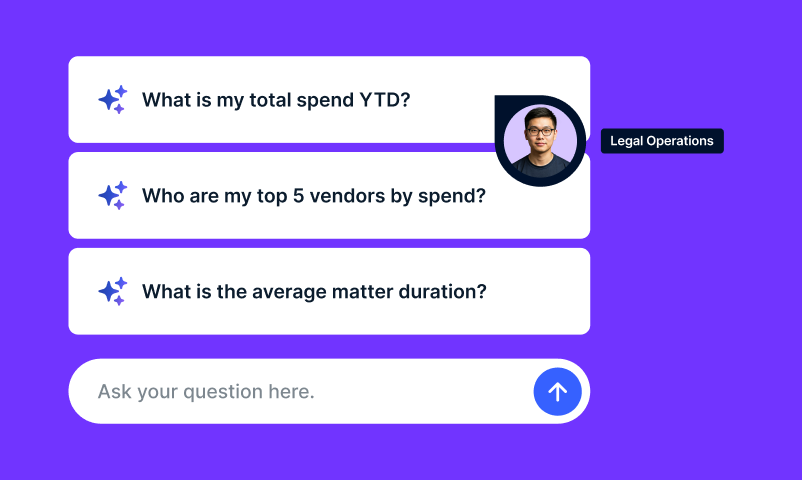
A lot has happened in the world of legal electronic invoicing (or legal e-billing) over the last two decades. The pioneers of the e-billing market were vendors working on behalf of in-house counsel; in the late 1990s, those using legal e-billing software in Europe were predominantly US head-quartered investment banks and insurance companies. This migrated over to Europe soon after, albeit driven by US companies.
In Part 1 of this story, we explore the history of legal e-billing in more detail, highlighting early drivers and barriers to adoption.
EARLY DRIVERS OF LEGAL E-BILLING IN THE USA
The early drivers of the e-billing market remain relevant today. Different companies and jurisdictions are simply at various stages of their e-billing maturity; the early adopters are driving the industry’s developments as they seek even more value from their law firm relationships. Those at the start of their journey will find that these early drivers resonate with them currently. In the early days of e-billing software in the US, in-house legal teams had begun to formally review their legal bills and had laid down billing guidelines and rules for their law firms.
MOST COMMON BILLING ISSUES DURING INVOICE REVIEW:
- Failure to comply with client billing rules/guidelines
- Exceeding estimate or budget without authorization
- Duplicate time charges and the billing of disallowed expenses
- Insufficient delegation of work, e.g., tasks performed by over-qualified fee earners and excessive supervision.
- Poor billing procedures, e.g., excessive bundling of tasks
- Vague invoice narrative, e.g., “document review”
The highly manual process of invoice review transposed into standards and software that required law firms to deliver billing information to their clients in electronic format using a third-party system. This gave the in-house lawyer the tools to analyze billing information and take appropriate action – usually related to saving external costs.
From some early case studies in the United States, this seemed possible. For example, Suzanne Hawkins, former senior counsel of General Electric (GE), said that e-billing saved the company over $1m in legal spend in its first year of use and that any in-house legal department should be able to save more than 15% of its costs by picking up incorrectly charged disbursements and unnecessary time entries. Likewise, Kevin Harrang, the deputy general counsel at Microsoft, said that e-billing helped Microsoft reduce legal costs by $2m annually. PLC’s General Counsel survey in 2007 showed that 10 out of 15 corporate legal departments claimed to have recovered their investment in e-billing within the first 12 months of operation. To this day, e-billing software remains one of the easier investments to prove ROI on due to its ability to save on the bottom line.
While there is no doubt that the initial motivator for e-billing and a formal bill review process was legal spend management, what is clear from the US experience is that the improved quality of data (and, with it, the ability to analyze legal spend across law firms) allowed a much more informed discussion to take place with outside counsel. The result improved spend management, vendor management in general, and value for money.
Against this backdrop, the industry began to see requests for e-billing sent to European law firms. While spend management was a minor driver – law in Europe was not perceived so much of a commodity as in the US – many European corporate legal departments saw e-billing software as an opportunity to refine their legal panels and build a more strategic relationship with their external advisors.
THE INTERNATIONALIZATION OF LEGAL E-BILLING
Legal e-billing software was well established in the US since the late 1990s, but it didn’t begin to impact the UK legal market until about 2003.
In the early 2000s, for many UK law firms, a request from a client to “do” e-billing meant sending a PDF copy of a paper invoice as an email attachment. Those of us in law firms engaged in the billing systems and processes had a big learning curve to undertake before we could even begin to address the actual systems and organizational changes that would be needed. Those with global offices could draw on their colleagues’ experience “across the pond” for some advice and guidance on what this new business process was all about.
The reality was that only a few law firms in the UK had time and billing systems that could support e-billing, and it required a lot of manual work to produce a file acceptable to the e-billing vendor systems. The LEDES 1998B file format was heavily used in the US but did not support the features required for successful e-billing in Europe. For example, there was no support for VAT accounting, multi-currency billing, or cross-jurisdictional transactions.
A group of law firms and corporate counsel – mainly based in the UK – decided to cooperate, and they designed and proposed a modified LEDES format to address these shortcomings. This LITIG (Legal IT Innovators Group) organization was the leader in developing what became the now widely adopted LEDES 1998Bi (international) standard.
LIFE AFTER LEDES 1998BI – ADDITIONAL BARRIERS TO LEGAL E-BILLING
Even after the modified LEDES format addressed international billing requirements and made the work faster and less manual for law firms, there was considerable European skepticism surrounding e-billing.
Even if a corporate legal team decided they wanted to obtain the benefits of legal spend management software and had achieved executive buy-in, budget, and resources to implement, they could still experience significant barriers. Even the most dedicated teams faced mammoth hurdles that prevented full e-billing implementation, resulting in numerous failed e-billing projects in Europe.
In 2007, Caroline Poynton, editor of FD Legal magazine, made this somewhat downbeat comment: “There is much negativity around e-billing systems in the UK; some of it borne out by US experiences, the rest stemming from logistical confusion as to how this can develop smoothly in the UK market without costing huge amounts of time and money. But the fact is that e-billing is unlikely to go away because of the huge potential benefits, particularly for large corporates. In the long-term, firms are going to have to embrace the change and be prepared to make the necessary investment in time and resources to make e-billing work if they want to retain such clients and progress.”
One such logistical confusion Poynton was referencing was how to automate the highly regulated nature of the European legal environment, mainly the rules that apply in the generation of legal bills. This level of regulation of legal invoices does not exist in the US.
One of the main obstacles to full e-billing in the UK was the fact that under the then-existing legislation (Solicitors Act 1974 Section 69), for a law firm to be able to sue a client for non-payment of fees, any bill sent to the client had to be “delivered under the cover of a letter signed by a partner in order for the law firm to be able to sue for costs.” In other words, so that law firms could remain covered in the event of non-paying clients, this Dickensian-sounding rule – redolent of quill pens and crusty lawyer’s offices – was a significant barrier to full legal e-billing. This all changed in March 2008 when Commencement Order No.1 came in place as part of the Legal Services Act, which removed the requirement for a legal bill to be sent in this way and cleared the way for real e-billing to happen in England and Wales.
It didn’t stop there, though, as further statutory/regulatory concerns, such as tax rules, needed consideration. Again, using the UK as an example, many firms produced a legal “bill” and a separate tax invoice. If the “e-bill” were to replicate both documents, these statutory and regulatory issues would have to be satisfied. Firms had to ensure that their e-bills and other information sent to clients and e-billing systems complied with, among others, the requirements of the Solicitors Regulation Authority (SRA), HM Revenue & Customs, Data Protection laws, the Business Names Act and EU billing regulations. Firms also had to ensure that the e-billing intermediary system handled these issues correctly and that the e-bill, as seen by the client, complied with all the appropriate regulations. With most e-billing vendors of the time being US-centric, there were many hurdles to overcome.
As if regulatory and legislative problems weren’t enough, organizations themselves had issues to resolve internally. Such issues prevented widespread adoption in the USA too:
- Financial barriers to e-billing were common, particularly in smaller corporates and firms. An e-billing implementation was time, resource, and cost-heavy, and this cost continued beyond implementation. Costs of e-billing included setup, licenses, and the resources required to run e-billing from an IT and administrative perspective. Law firms may face billing department reshuffling, overhauling processes (uploading bills and managing queries and rejections), and even investment in other systems to support e-billing, such as practice management systems that could produce matter and timekeeper lists and time recording.
- IT resources were a luxury not given to most legal departments. The e-billing implementation would join a queue for corporate IT resources and the rest of the business. In-house legal teams frequently found their project pushed back behind more pressing business technology projects. Even after implementation, on-premises solutions require ongoing IT support in maintenance, integrations, troubleshooting, and upgrades to new versions.
- Change management continues to be a barrier even today but was more widespread when e-billing was new. E-billing fundamentally changed how firms billed clients, and the impact on teams, infrastructure, and processes was huge. As matters would be visible to the corporate client and billing guidelines put in place, it required law firms to be completely accurate with their timekeeping and narratives, right down to the task and activity codes. This data entry level was alien, a drain to learn, and in many cases, extremely manual. On the in-house side, ensuring teams didn’t “bypass” the system to continue managing their matters in the old, manual way was also a significant challenge, and legal leaders could not be confident 100% of the spend was passing through the system accurately.
With many of these vast logistical obstacles overcome by legislation changes and software developments, the last decade has seen more legal departments mandate their law firms to use e-billing so they can better manage to spend, budget accurately, and make strategic matter resourcing decisions. Part 2 explores the changes that have led to widespread adoption of e-billing software and identifies where the industry is headed.


















